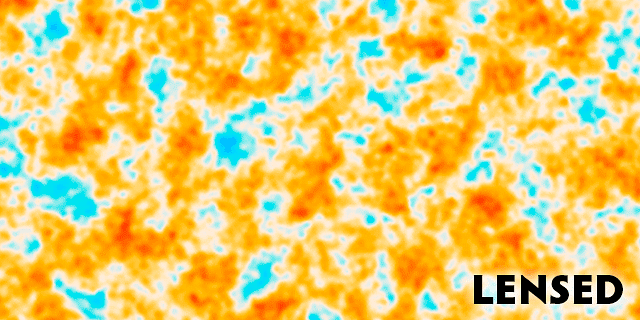Data from the Planck mission have allowed scientists to create a map showing matter everywhere in the universe, both light and dark. This simulation shows how it was done.
Normal, or light, matter is made up of atoms and accounts for only a small percent of all the mass in our universe. The majority is dark – matter that can’t be seen but still produces a gravitational tug on other matter and light. As light travels to us from distant objects, the attraction of gravity pulls it toward regions made denser by dark matter, bending the light rays’ path through an effect called gravitational lensing.
Planck has imaged the most distant light we can observe, called the cosmic microwave background, with unprecedented precision. By measuring the gravitational lensing of this ancient light, Planck scientists have been able to map the distribution of matter everywhere in the universe.
This animation flips between simulated views of the cosmic microwave background light detected by Planck, both with and without the lensing effect.
Planck is a European Space Agency mission, with significant participation from NASA. NASA’s Planck Project Office is based at NASA’s Jet Propulsion Laboratory, Pasadena, Calif. JPL contributed mission-enabling technology for both of Planck’s science instruments. European, Canadian and U.S. Planck scientists work together to analyze the Planck data.
Image credit: ESA/NASA/JPL-Caltech
2 min read


























